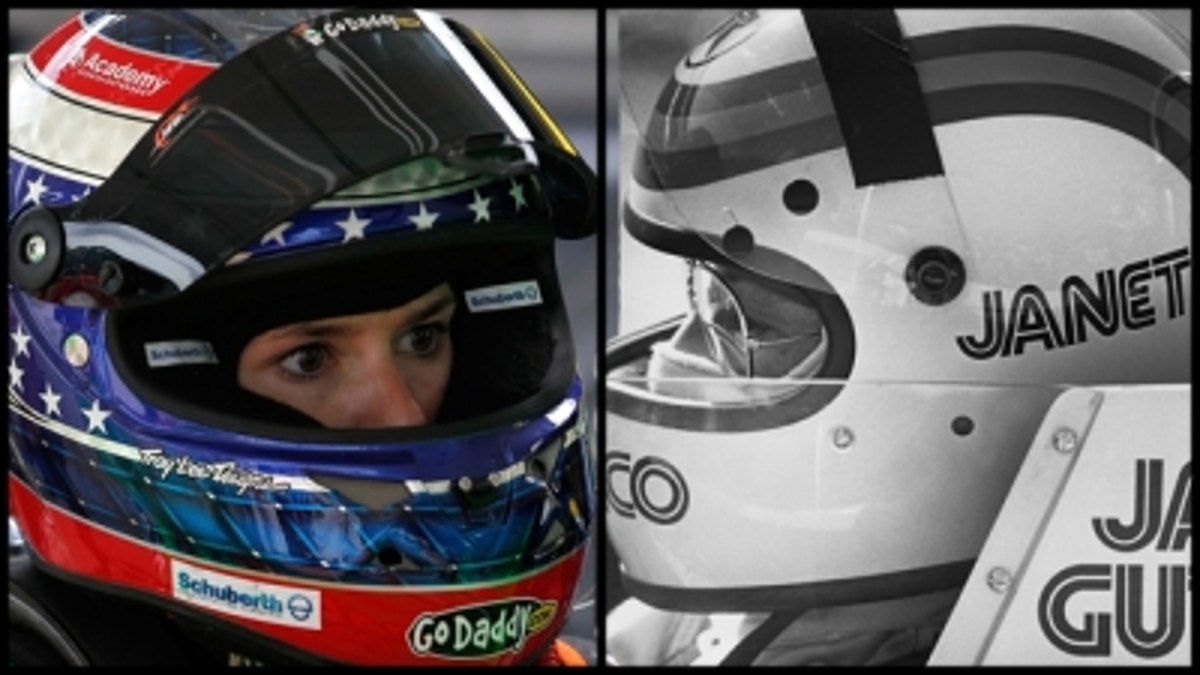
Danica Patrick has found more than the success that eluded Janet Guthrie in her brief NASCAR stint.
Patrick also has the acceptance in the garage that Guthrie never did.
Guthrie struggled in an era when women were still viewed in stock car racing as unwanted outsiders. Guthrie, the first woman to race in NASCAR's Coca-Cola 600 in 1976, received an icy reception from the sport's biggest drivers as she tried to build her career.
It was in stark contrast to the scene on pit road moments after Patrick clinched her Daytona 500 pole — with a hug from Tony Stewart and a handshake from Jeff Gordon
Guthrie congratulated Patrick on Sunday for becoming the first woman to win the top spot for any race in NASCAR's top circuit. But Guthrie was more proud of the way NASCAR's attitude toward women has evolved over the last 30 years. Guthrie was heartened at seeing a women succeed in a man's world.
"It took time for that attitude to change, but it did change," Guthrie told The Associated Press by phone Sunday. "That was one of my biggest pleasures was seeing that attitude change."
Guthrie was the previous best female qualifier in a Cup race. She started ninth at Bristol and Talladega in 1977.
She was the first woman to drive in the Indianapolis 500 in 1977, that same year she became the first to run in the Daytona 500. A ninth-place finish at Indy in 1978 stood as the best by a woman until Patrick finished fourth in 2005, then third in 2009.
"I'm ancient history," Guthrie said, from Colorado. "It's about time my little record got broken."
She raced in a decade well before a female driver could pose for bikini shoots or star in a Super Bowl commercial. Women were largely unwelcome in the men's club of racing, leaving competitive rides and scant sponsorship dollars at a premium. Guthrie fought for those spots, and then had to prove her mettle in the car, even if acceptance into the driving fraternity never came.
In her book, "Janet Guthrie: A Life at Full Throttle," Guthrie recounted the reception she received from other drivers when she came to Lowe's for the 1976 race.
"When I shook hands with Richard Petty, I thought I'd get frostbite," she wrote. "Later, he would be quoted as saying of me: `She's no lady. If she was, she'd be at home. There's a lot of differences in being a lady and being a woman.'"
Petty, a seven-time NASCAR champion and Hall of Famer, called Patrick's triumph, "a big deal for NASCAR."
"From that standpoint, it's a good deal," he said. "She can bring a lot of attention and hopefully we can all gain some new people watching. We have a big stage to play on next week and this helps set it all up."
Petty did not congratulate Patrick in the statement.
Gordon said NASCAR was one of many sports where views toward women and minorities have grown over the decades.
"It's not about the color of your skin or your gender, it's about your abilities," Gordon said. "You have to prove that. I think Danica's a talented race car driver."
Guthrie raced in 33 Cup races and made 11 IndyCar stars over five years. And while she said her racing career was mostly viewed with "absolute heresy" by men, she did have her backers. Well, as long as she kept them quiet.
"I soon learned not to acknowledge them publicly, because if I thanked them, and that got into the newspaper, the next day they wouldn't speak to me," she said. "It was a completely different thing. Danica's been driving NASCAR for three years or something like that. All the guys know how she drives by now and that's 95 percent of the battle right there."
The next step is sparking the desire to race in other little girls. The new generation never followed Guthrie. She was skeptical Patrick could usher in a generation of female racers.
"There's so many talented women drivers out there that do not have access to the kind of machinery that Danica has," he said. "I think if they had top-notch equipment, they might be capable of doing the same type of thing."
